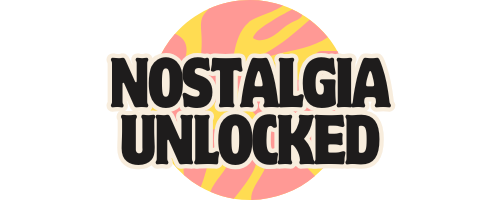20 TV Shows from the 1960s that are Everything But Forgotten
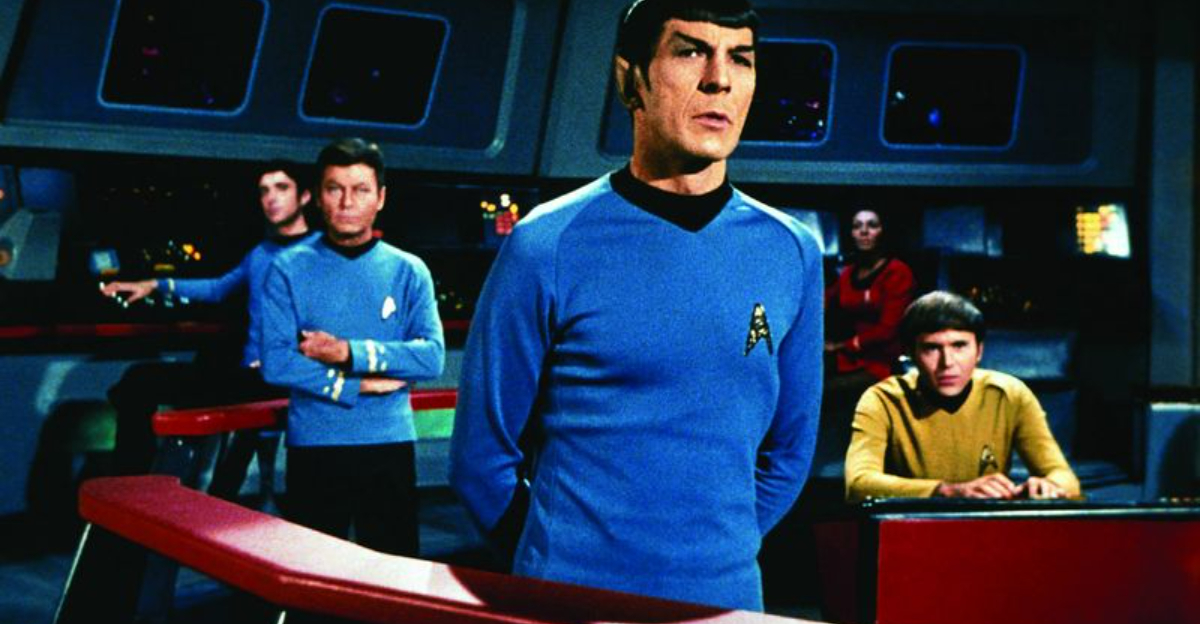
The 1960s brought us some of the most groundbreaking television ever made. From spies and cowboys to monsters and martians, these shows shaped how we think about entertainment today.
While technology has advanced and production values have soared, these classics continue to influence modern TV and maintain dedicated fan bases decades after they first aired.
1. The Twilight Zone: Mind-Bending Anthology

Rod Serling’s eerie anthology series transported viewers to a dimension of imagination every week. Each standalone episode delivered unexpected twists, moral dilemmas, and commentary on human nature that left audiences both entertained and unsettled.
Famous for its iconic opening narration and that unforgettable theme music, The Twilight Zone attracted Hollywood’s finest talent.
Many episodes like ‘Time Enough at Last’ and ‘Nightmare at 20,000 Feet’ remain cultural touchstones that continue to be referenced and parodied in modern media.
2. Star Trek: Where No Show Had Gone Before
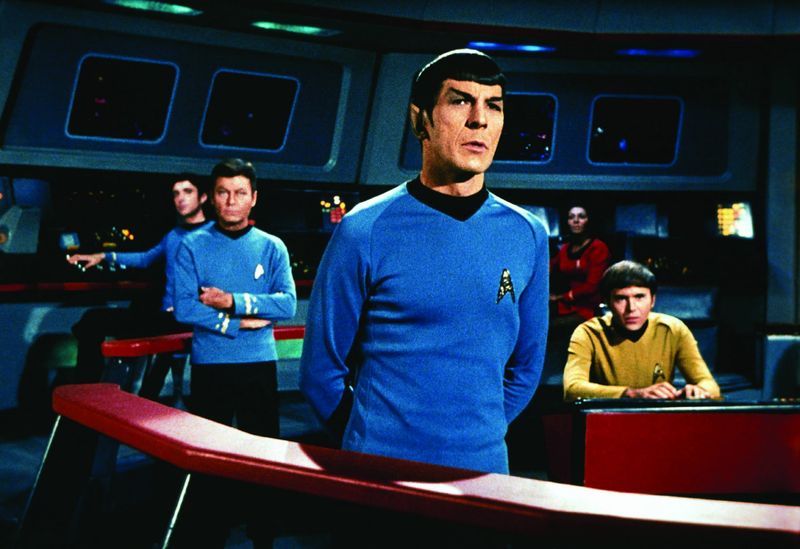
Captain Kirk and his diverse crew aboard the USS Enterprise captured imaginations with their five-year mission to explore strange new worlds. Though it only ran for three seasons, this sci-fi pioneer spawned multiple spin-offs, movies, and a global fandom called ‘Trekkies.’
Beyond its entertainment value, Star Trek tackled social issues like racism and war through the lens of space exploration. Creator Gene Roddenberry’s optimistic vision of humanity’s future continues to resonate with viewers seeking hope in troubled times.
3. I Dream of Jeannie: Magical Mischief

Astronaut Tony Nelson’s life turned upside down when he freed a 2,000-year-old genie from her bottle. Barbara Eden charmed viewers as the magical blonde bombshell in her iconic pink harem costume, while Larry Hagman played the straight-laced NASA man trying to keep her supernatural powers under wraps.
Their romantic tension and comedic mishaps kept audiences laughing for five seasons. The show’s playful take on gender roles might seem dated now, but Jeannie’s independent spirit and Tony’s respect for her wishes were surprisingly progressive for the era.
4. Bewitched: Suburban Sorcery
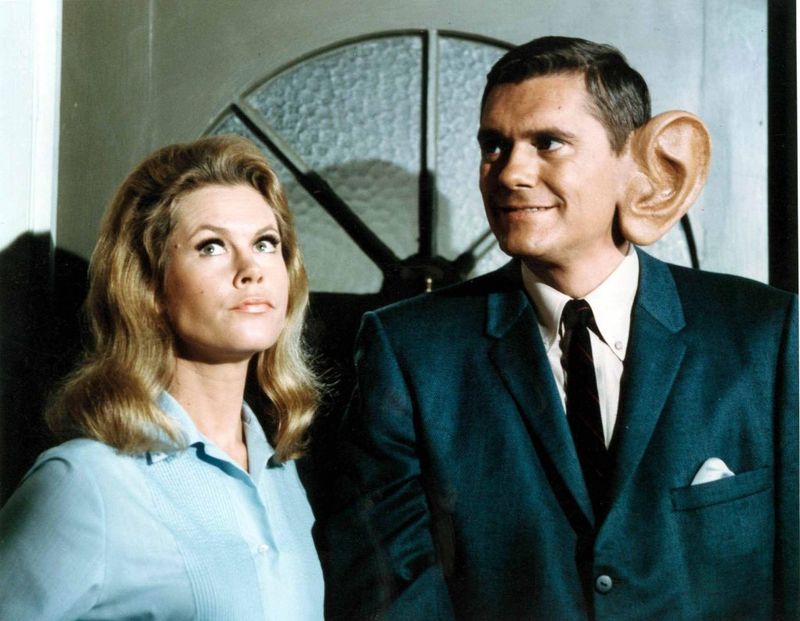
Nose-twitching witch Samantha Stevens tried living as a normal housewife, much to the dismay of her magical relatives. Elizabeth Montgomery sparkled in the lead role, bringing charm and depth to a character constantly balancing magical heritage with her mortal husband’s wishes.
The show cleverly used witchcraft as a metaphor for women’s liberation during a time of changing gender roles.
Agnes Moorehead stole scenes as Endora, Samantha’s disapproving mother who never missed a chance to turn son-in-law Darrin into a variety of animals when he stepped out of line.
5. The Flintstones: Stone Age Sitcom

Meet the modern Stone Age family! As television’s first prime-time animated series, The Flintstones broke new ground by targeting adults with its prehistoric parody of suburban life. Fred’s ‘Yabba-Dabba-Doo!’ and foot-powered car became instant cultural icons.
Behind the caveman antics lay clever social satire about consumerism, workplace politics, and marriage. The show’s brilliant stone-age versions of modern conveniences (elephant shower, bird record player) showcased the writers’ creativity.
Six decades later, the Flintstones remain part of our cultural bedrock, influencing everything from vitamins to theme parks.
6. The Addams Family: Delightfully Macabre

This gleefully ghoulish clan flipped traditional family values upside down, celebrating the weird and macabre while viewing mainstream society as strange. Their gothic mansion filled with bizarre pets and torture devices became a playground for dark comedy.
Gomez and Morticia’s passionate marriage defied the sanitized TV relationships of the era. Thing (the disembodied hand) and Cousin Itt (the walking hairball) pushed creative boundaries for special effects.
7. Gilligan’s Island: Shipwrecked Shenanigans
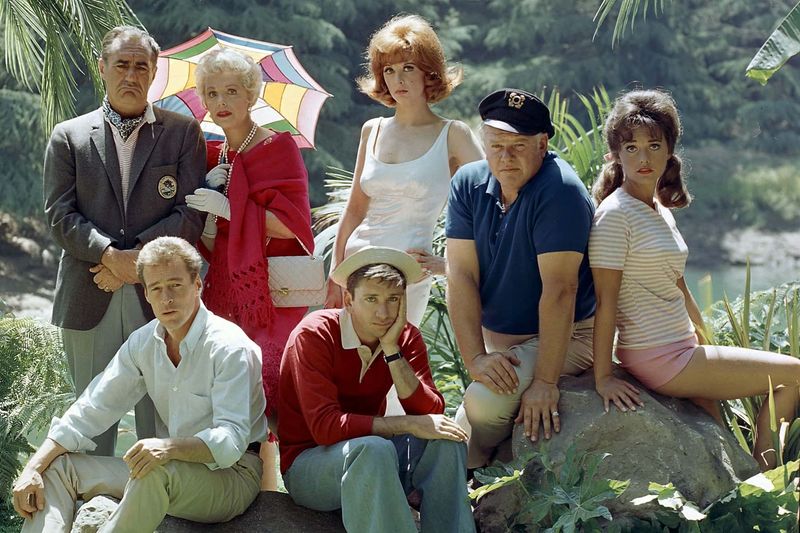
Seven castaways trying to escape a desert island created comedy gold that’s outlasted countless critics’ dismissals. The simple premise—a three-hour tour gone terribly wrong—spawned 98 episodes of madcap adventures and failed rescue attempts.
Each character represented a different slice of American society: the Skipper, Gilligan, millionaire couple, movie star, professor, and farm girl. Their misadventures highlighted class differences while showing how cooperation trumps social standing.
8. The Munsters: Monster Family Next Door
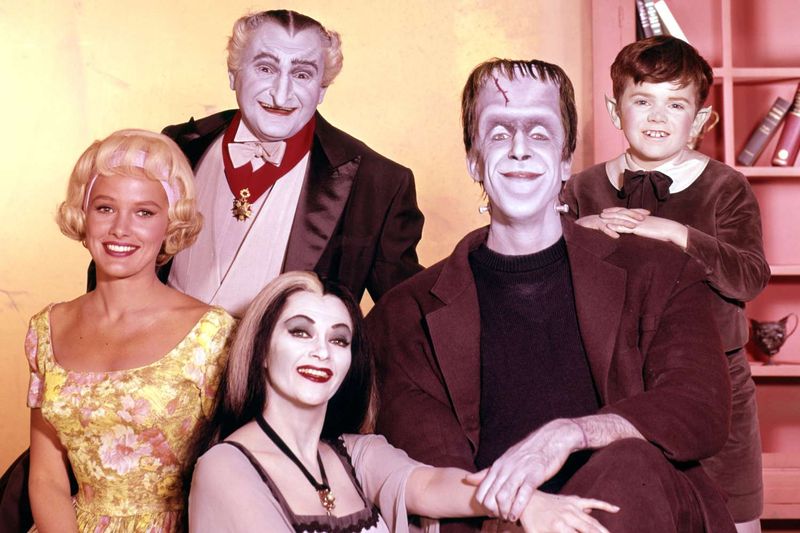
Herman Munster’s Frankenstein-like appearance didn’t stop him from being a loving father and husband in this monster-themed sitcom.
The family—including vampire wife Lily, werewolf son Eddie, and stunning niece Marilyn (considered the odd one because she looked normal)—lived in a cobweb-filled mansion at 1313 Mockingbird Lane.
Fred Gwynne’s portrayal of Herman combined childlike innocence with superhuman strength for hilarious results. The show cleverly inverted beauty standards, with the monsters considering themselves normal while pitying “ugly” regular humans.
9. Get Smart: Spy Spoof Supreme
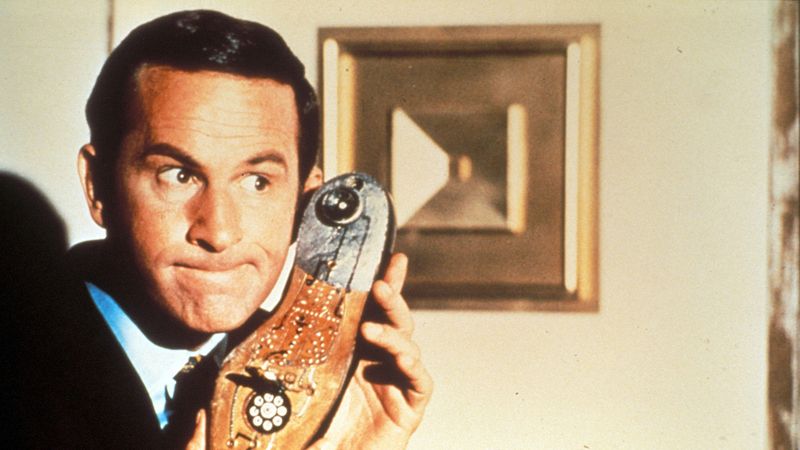
Would you believe… a bumbling secret agent with a shoe phone saved the world weekly? Maxwell Smart (Agent 86) fought the evil organization KAOS with more luck than skill in this brilliant parody of James Bond-style spy thrillers.
Don Adams’ delivery of catchphrases like “Missed it by that much!” and “The old [ridiculous trick] trick!” became part of the American lexicon.
The cone of silence, the door-filled corridor in the opening credits, and Smart’s Sunbeam Tiger convertible showcased the show’s genius for visual gags and spy gadget parodies.
10. The Dick Van Dyke Show: Comedy Classic

Television writer Rob Petrie balanced his Manhattan career with suburban family life in this groundbreaking sitcom.
The show’s innovative approach included showing both work and home environments, with Dick Van Dyke’s physical comedy and Mary Tyler Moore’s charm creating perfect chemistry.
Creator Carl Reiner drew from his own experiences writing for Sid Caesar to craft authentic behind-the-scenes comedy stories. Moore’s portrayal of Laura Petrie broke new ground by showing a modern housewife wearing pants instead of dresses, reflecting changing women’s fashion.
11. Bonanza: Western Family Saga

The Cartwright clan ruled the thousand-square-mile Ponderosa Ranch in this beloved western that ran for 14 seasons. Widower Ben Cartwright and his three sons (each from different mothers) navigated frontier challenges while upholding their strong moral code in the Nevada Territory of the 1860s.
As one of the first television shows broadcast in color, Bonanza’s vibrant landscapes and iconic burning map opening sequence showcased NBC’s color technology. The show tackled serious issues like racism and land rights alongside traditional western action.
12. Mission Impossible: High-Stakes Espionage
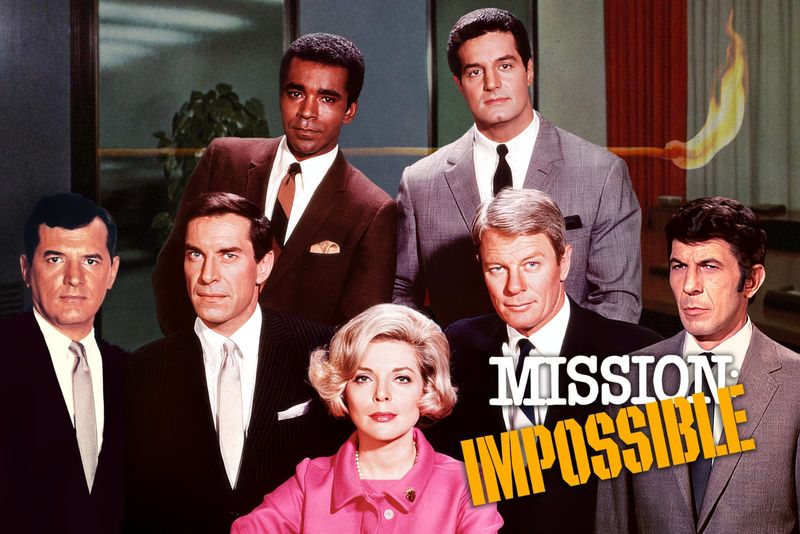
Your mission, should you choose to accept it: Remember this groundbreaking spy series that revolutionized action television! The Impossible Missions Force tackled assignments too sensitive for regular government channels, using elaborate deceptions rather than violence to defeat enemies.
Each episode’s formula became iconic: the self-destructing tape briefing, team assembly sequence, and intricate plan execution. The show’s innovative self-contained stories focused on how the team would pull off seemingly impossible tasks.
Lalo Schifrin’s pulse-pounding theme music remains one of television’s most recognizable compositions, instantly building tension and excitement.
13. The Jetsons: Retrofuturistic Family Fun

Flying cars, robot maids, and buildings on stilts! The Jetsons gave us a delightfully optimistic vision of life in 2062 that still captivates viewers today. George Jetson’s comical struggles with futuristic technology showed that family dynamics remain constant regardless of setting.
Rosie the Robot became an early pop culture example of artificial intelligence with personality. The show’s visual aesthetic—a mix of 1960s design sensibilities and imaginative future tech—created a unique “retrofuturistic” style that continues to influence science fiction.
14. Batman: Campy Caped Crusader
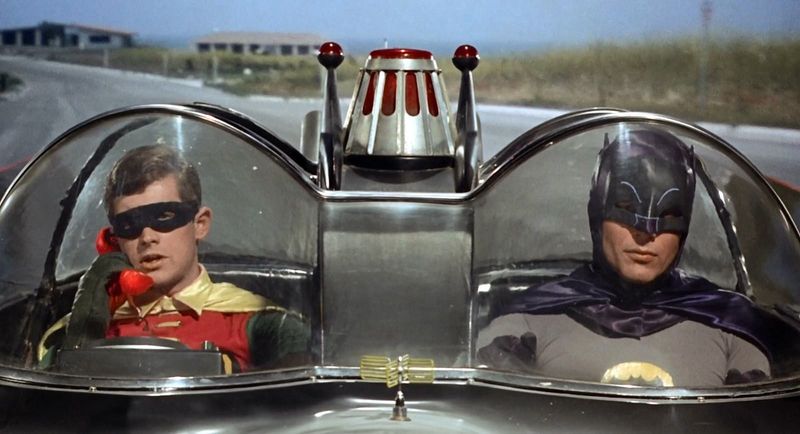
Holy pop culture phenomenon, Batman! This deliberately campy take on the Dark Knight featured Adam West and Burt Ward as the Dynamic Duo fighting colorful villains in 1960s Gotham City.
The show’s tongue-in-cheek approach included tilted camera angles, over-the-top fight scenes with “POW!” graphics, and deliberately ridiculous dialogue.
Celebrity guest stars lined up to play villains, with Cesar Romero (Joker), Burgess Meredith (Penguin), and Julie Newmar (Catwoman) creating unforgettable interpretations.
Batman’s seriousness amid absurd situations created comedy gold. The Batmobile, Batcave, and Bat-gadgets from this series defined the character’s visual world for generations.
15. The Beverly Hillbillies: Fish Out of Water Comedy

Striking oil made the Clampetts millionaires overnight, but their backwoods sensibilities remained intact when they moved to ritzy Beverly Hills. The culture clash between simple country folk and sophisticated city dwellers created comedy gold that topped ratings charts throughout its nine-season run.
Granny’s moonshine, Jethro’s dimwitted schemes, and banker Mr. Drysdale’s money-grubbing antics became reliable comedy setups. The show’s catchy bluegrass theme song explained the entire premise in just over a minute.
Despite critics dismissing it as lowbrow entertainment, audiences couldn’t get enough of this riches-to-more-riches story.
16. The Man from U.N.C.L.E.: Cold War Cool
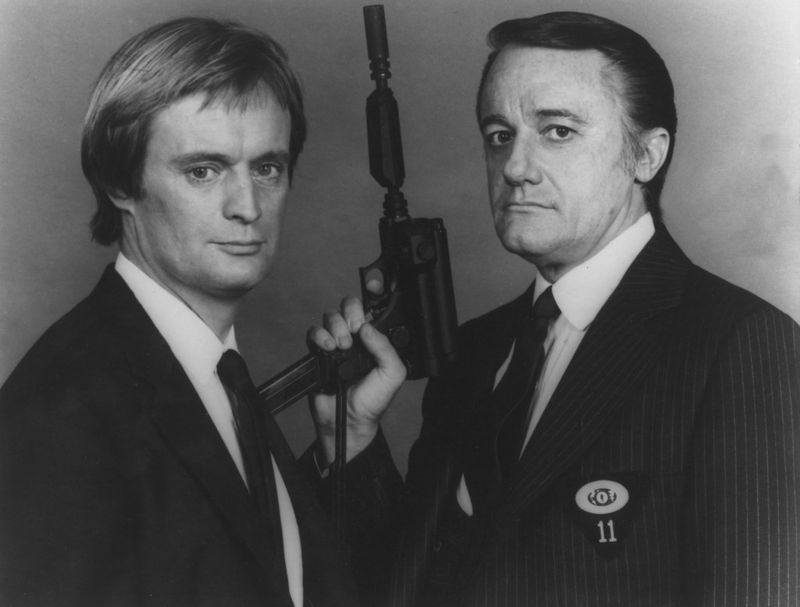
American agent Napoleon Solo and Russian operative Illya Kuryakin teamed up during the height of the Cold War to battle the evil organization THRUSH. This spy series captured the 1960s fascination with espionage while offering an optimistic vision of international cooperation at a time of global tension.
Robert Vaughn and David McCallum became international heartthrobs as the suave agents with their special communicator pens and hidden headquarters behind Del Floria’s Tailor Shop.
The show’s blend of action, humor, and cutting-edge gadgetry established a formula that influenced spy fiction for decades.
17. Lost in Space: Cosmic Family Adventure
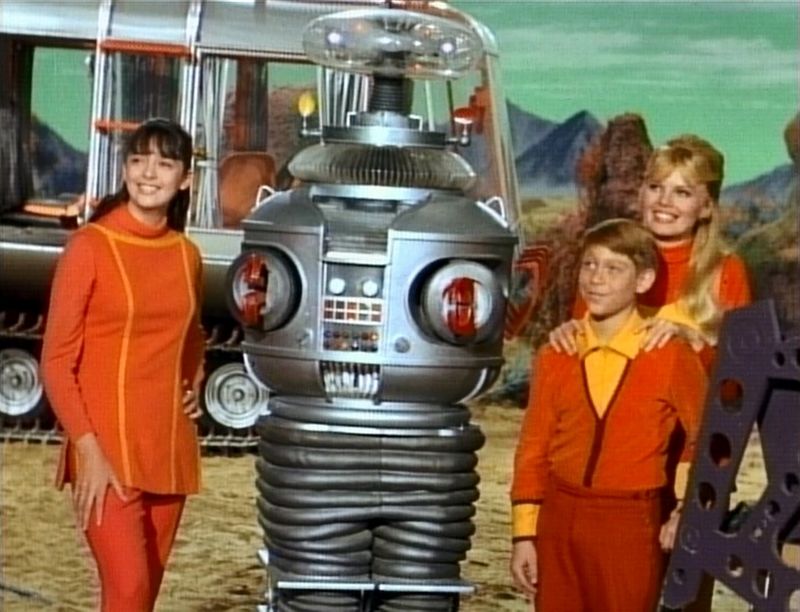
The Robinson family’s planned colonization mission went terribly wrong when sabotage sent them off course into the depths of space. This science fiction series combined family drama with space exploration as the Robinsons faced alien encounters and survival challenges on distant planets.
Robot’s warnings of “Danger, Will Robinson!” and Dr. Smith’s cowardly scheming became iconic elements of pop culture. The show evolved from serious sci-fi drama in its first season to more campy adventure in later years.
18. Hogan’s Heroes: POW Camp Comedy
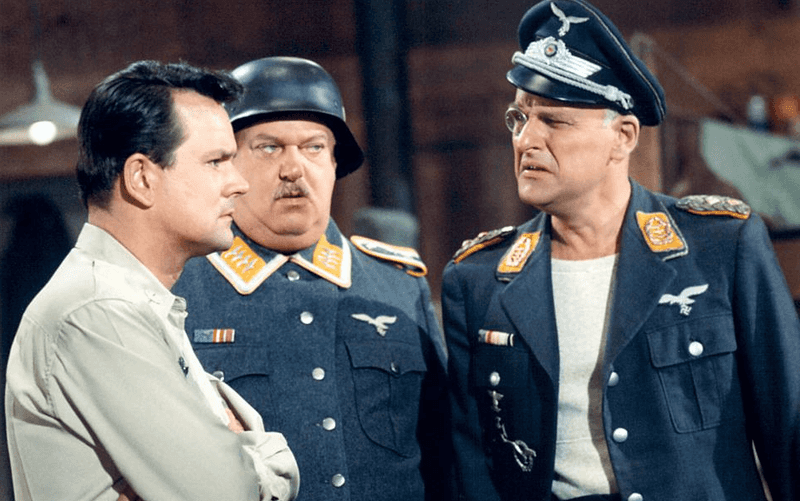
A German prisoner-of-war camp during World War II doesn’t sound like comedy gold, yet this sitcom found humor in showing American prisoners outsmarting their Nazi captors.
Colonel Hogan and his multinational team operated a secret resistance unit from within Stalag 13, using tunnels and disguises to conduct sabotage missions.
The incompetent Colonel Klink and bumbling Sergeant Schultz (“I see nothing!”) provided comic foils to the clever prisoners.
Many cast members, including Werner Klemperer (Klink) and John Banner (Schultz), were Jewish actors who had fled Nazi persecution, adding an ironic layer to their portrayals of buffoonish German officers.
19. The Monkees: Made-for-TV Band

Hey, hey, they were The Monkees! Created specifically for television as America’s answer to The Beatles, this fictional band became a real musical phenomenon. The show’s zany, quick-cut style borrowed heavily from The Beatles’ film “A Hard Day’s Night” while adding surreal comedy elements.
Despite being cast as actors playing musicians, Micky Dolenz, Davy Jones, Michael Nesmith, and Peter Tork fought for creative control and eventually played their own instruments. Their catchy pop hits like “I’m a Believer” and “Last Train to Clarksville” topped charts worldwide.
20. The Outer Limits: Sci-Fi Anthology
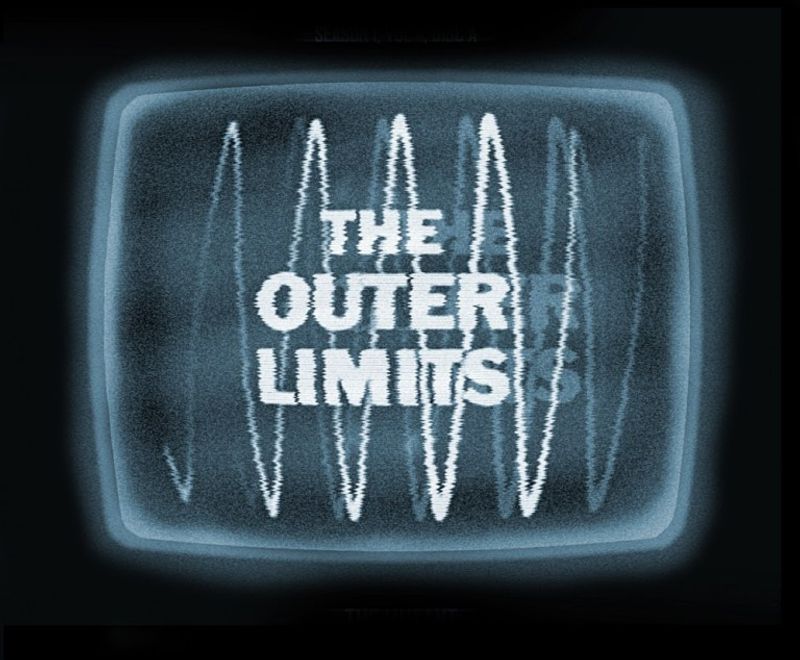
“There is nothing wrong with your television set…” This science fiction anthology series pushed boundaries with its dark, philosophical tales of alien encounters, time travel, and technological perils. Each episode opened with the iconic “Control Voice” taking over viewers’ TV signals.
Known for impressive monster designs despite budget limitations, the show created memorable creatures like the Zanti Misfits and the Galaxy Being. Unlike its competitor The Twilight Zone, The Outer Limits focused specifically on science fiction rather than fantasy or supernatural elements.
Its exploration of human nature through alien encounters influenced countless science fiction writers and filmmakers.
